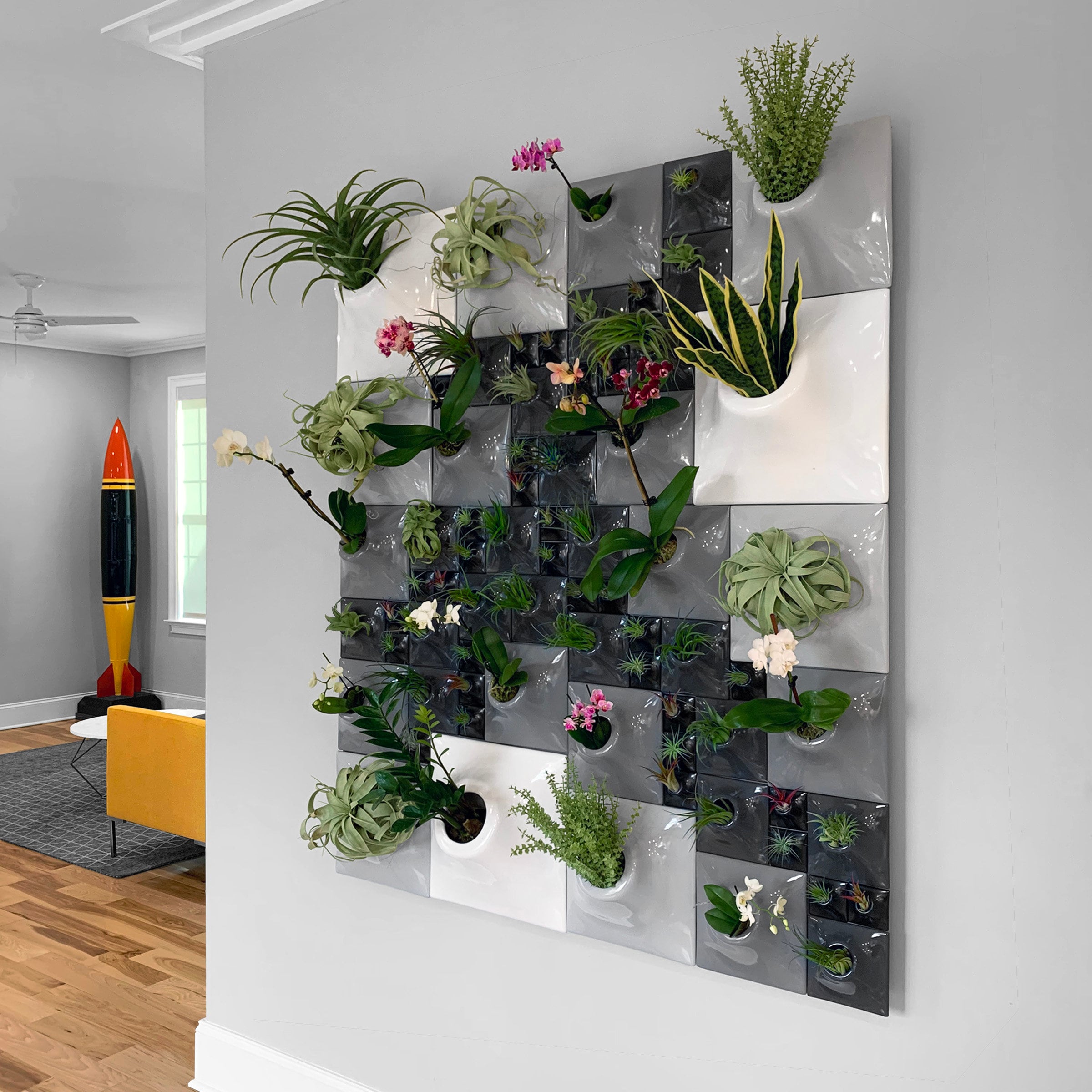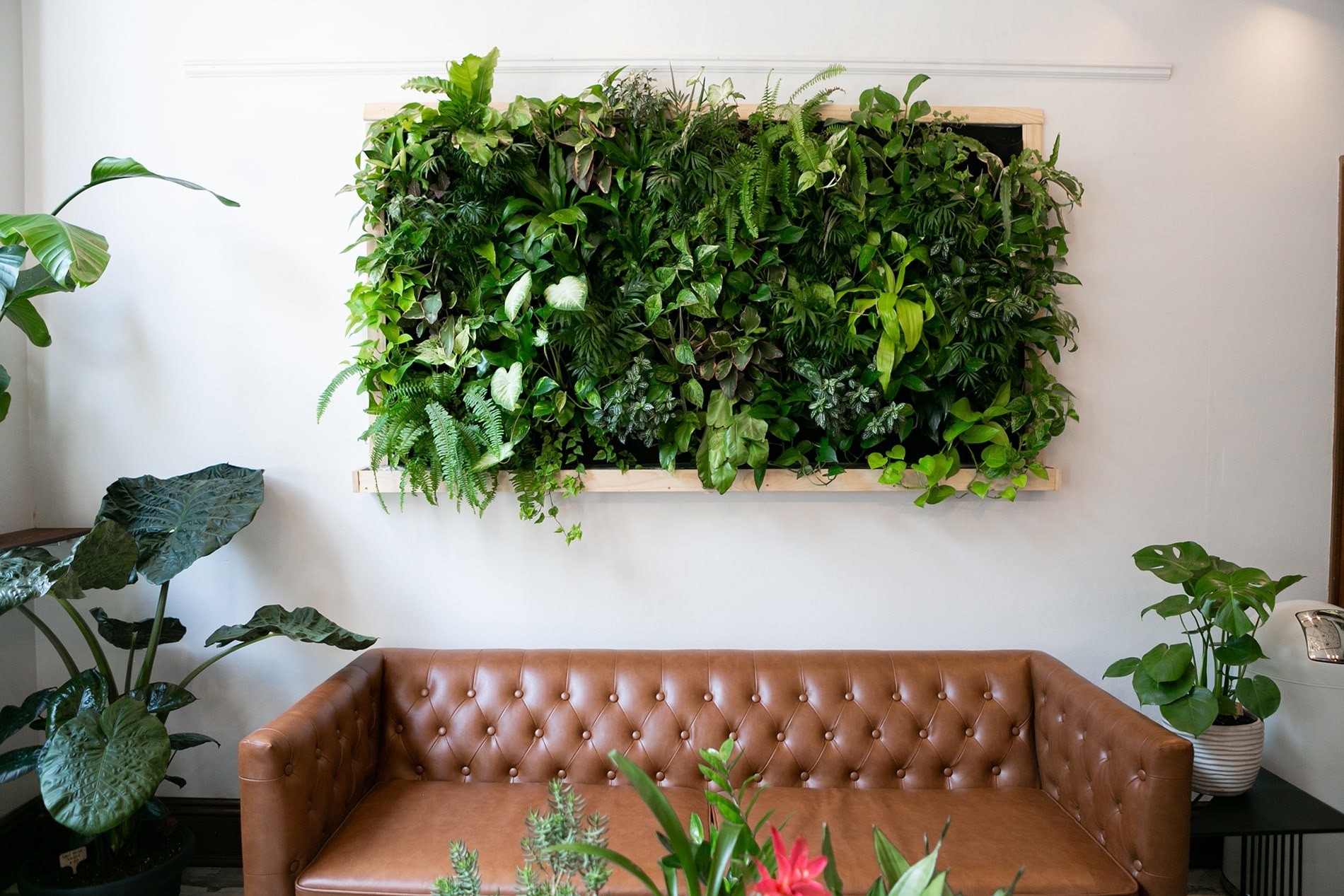“`markdown
# The Verdant Embrace: A Comprehensive Guide to plant Walls
Plant walls, also known as vertical gardens or living walls, have blossomed from a niche architectural feature into a mainstream design trend, gracing homes, offices, and public spaces worldwide. These living tapestries offer a multitude of benefits, from aesthetic appeal and air purification to noise reduction and psychological well-being. This comprehensive guide delves into the intricacies of plant walls, exploring their types, construction, maintenance, and the profound impact they have on our lives.
The Evolution of Vertical Gardens
The concept of vertical gardening is not entirely new. Ancient civilizations, such as the Hanging Gardens of Babylon, demonstrated the human desire to integrate greenery into architectural spaces. However, modern plant wall technology has revolutionized the way we approach vertical cultivation. The advancements in hydroponics, irrigation systems, and lightweight growing mediums have made it possible to create sustainable and visually stunning plant walls in diverse environments.

Types of Plant Wall Systems
Plant walls can be broadly categorized into two main types: active and passive systems.
Active Plant Walls
These systems utilize mechanical components, such as pumps and fans, to circulate water and nutrients. Active systems offer precise control over environmental conditions, making them suitable for demanding applications, such as large-scale commercial installations.

Passive Plant Walls
These systems rely on natural processes, such as capillary action and gravity, to distribute water and nutrients. Passive systems are generally simpler to install and maintain, making them ideal for residential and smaller commercial projects.
Within these broad categories, various specific systems exist, each with its own advantages and disadvantages:
Modular Panel Systems

These systems consist of pre-fabricated panels that can be easily assembled and customized. They often incorporate pockets or containers for individual plants, allowing for easy replacement and maintenance.
Felt Pocket Systems
These systems utilize felt or other porous materials to create pockets for plants. Felt systems are lightweight and flexible, making them suitable for curved or irregular surfaces.
Hydroponic Systems
These systems grow plants in nutrient-rich water solutions, eliminating the need for soil. Hydroponic systems offer precise control over nutrient delivery and water usage, making them highly efficient.
Loose Media Systems
These systems use a substrate, such as soil or a soilless mix, to support plant growth. They are often used in outdoor applications where natural rainfall can supplement irrigation.
Benefits of Plant Walls
The benefits of plant walls extend beyond their aesthetic appeal. They offer a range of environmental, economic, and psychological advantages.
Improved Air Quality
Plants absorb pollutants and release oxygen, contributing to cleaner and healthier indoor air. Plant walls can effectively remove volatile organic compounds (VOCs), such as formaldehyde and benzene, which are commonly found in indoor environments.
Enhanced Thermal Insulation
Plant walls can act as thermal barriers, reducing heat gain in summer and heat loss in winter. This can lead to significant energy savings and improved building efficiency.
Noise Reduction
Plants can absorb and deflect sound waves, reducing noise levels in indoor environments. Plant walls can create a more peaceful and productive workspace.
Increased Biodiversity
Plant walls can provide habitat for insects and other small creatures, contributing to urban biodiversity. They can also attract pollinators, such as bees and butterflies, which are essential for ecosystem health.
Psychological Well-being
Studies have shown that exposure to nature can reduce stress, improve mood, and enhance cognitive function. Plant walls can create a calming and restorative environment, promoting psychological well-being.
Aesthetic Appeal
Plant walls can transform dull and uninspiring spaces into vibrant and engaging environments. They can add a touch of nature to urban settings and create a sense of connection to the outdoors.
Increased Property Value
Plant walls can enhance the aesthetic appeal and sustainability of buildings, potentially increasing property values.
Construction and Installation
The construction and installation of a plant wall require careful planning and execution. The process typically involves the following steps:
Site Assessment
The first step is to assess the site conditions, including light levels, temperature, humidity, and structural support.
System Selection
Based on the site assessment, the appropriate plant wall system is selected.
Structural Support
A sturdy framework is installed to support the weight of the plant wall.
Irrigation System Installation
An irrigation system is installed to deliver water and nutrients to the plants.
Growing Medium and Plant Selection
The appropriate growing medium and plant species are selected based on the system type and site conditions.
Planting and Installation
The plants are carefully planted and installed onto the framework.
Testing and Adjustment
The irrigation system and other components are tested and adjusted to ensure proper functioning.
Maintenance of Plant Walls
Plant walls require regular maintenance to ensure their health and longevity. The maintenance tasks typically include:
Watering and Fertilizing
The plants need to be watered and fertilized regularly, depending on the system type and plant species.
Pruning and Trimming
The plants need to be pruned and trimmed to maintain their shape and prevent overcrowding.
Pest and Disease Control
The plants need to be inspected regularly for pests and diseases, and appropriate measures need to be taken to control them.
System Inspection and Maintenance
The irrigation system and other components need to be inspected and maintained regularly to ensure proper functioning.
Plant Replacement
Dead or diseased plants need to be replaced promptly.
Plant Selection for Plant Walls
The selection of plants for a plant wall depends on several factors, including the system type, site conditions, and desired aesthetic. Some popular plant choices include:
Ferns
Ferns are well-suited for plant walls due to their adaptability and lush foliage.
Epiphytes
Epiphytes, such as bromeliads and orchids, thrive in soilless environments and add a touch of exotic beauty.
Succulents
Succulents are drought-tolerant and require minimal maintenance, making them ideal for sunny locations.
Herbs
Herbs, such as mint and basil, add fragrance and flavor to plant walls.
Tropical Foliage
Tropical foliage plants, such as philodendrons and pothos, create a lush and vibrant display.
Flowering Plants
Flowering plants, such as begonias and impatiens, add color and visual interest to plant walls.
Challenges and Considerations
While plant walls offer numerous benefits, they also present some challenges and considerations:
Cost
The initial cost of installing a plant wall can be significant, depending on the size and complexity of the system.
Maintenance
Plant walls require regular maintenance, which can be time-consuming and costly.
Water Usage
Plant walls can consume significant amounts of water, especially in arid climates.
Structural Support
Plant walls can be heavy and require strong structural support.
Light Requirements
Plants require adequate light to thrive, and supplemental lighting may be necessary in some locations.
Pest and Disease Control
Plant walls can be susceptible to pests and diseases, which can be difficult to control.
The Future of Plant Walls
Plant wall technology is constantly evolving, with new innovations and advancements emerging regularly. The future of plant walls is likely to involve:
Smart Technology
Smart sensors and automation systems will enable more precise control over environmental conditions and maintenance tasks.
Sustainable Materials
The use of sustainable and recycled materials will reduce the environmental impact of plant walls.
Vertical Farming Integration
Plant walls will be increasingly integrated with vertical farming systems, providing fresh produce in urban environments.
Biophilic Design
Plant walls will play a crucial role in biophilic design, creating healthier and more engaging indoor environments.
Community Gardens
Plant walls will be used to create community gardens in urban spaces, promoting social interaction and food security.
Conclusion
Plant walls are a powerful tool for integrating nature into our built environments. They offer a multitude of benefits, from improved air quality and energy efficiency to enhanced psychological well-being and aesthetic appeal. As technology advances and our understanding of biophilic design deepens, plant walls will continue to play a vital role in creating sustainable and healthy urban spaces. They represent a verdant embrace, connecting us to the natural world and enriching our lives in countless ways.
“`
